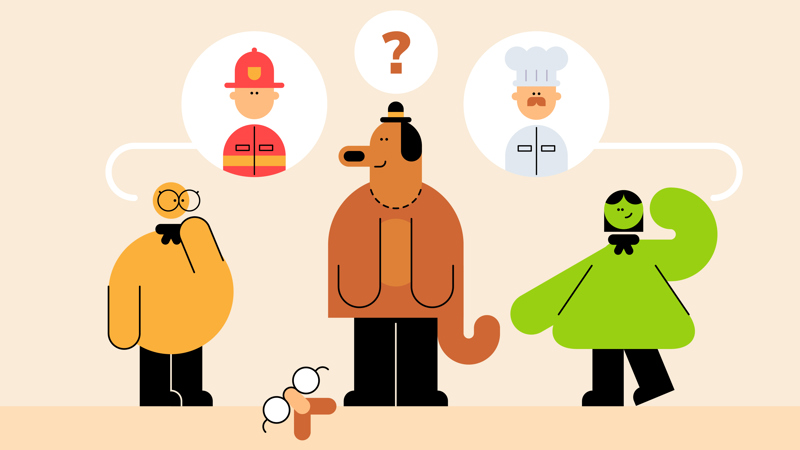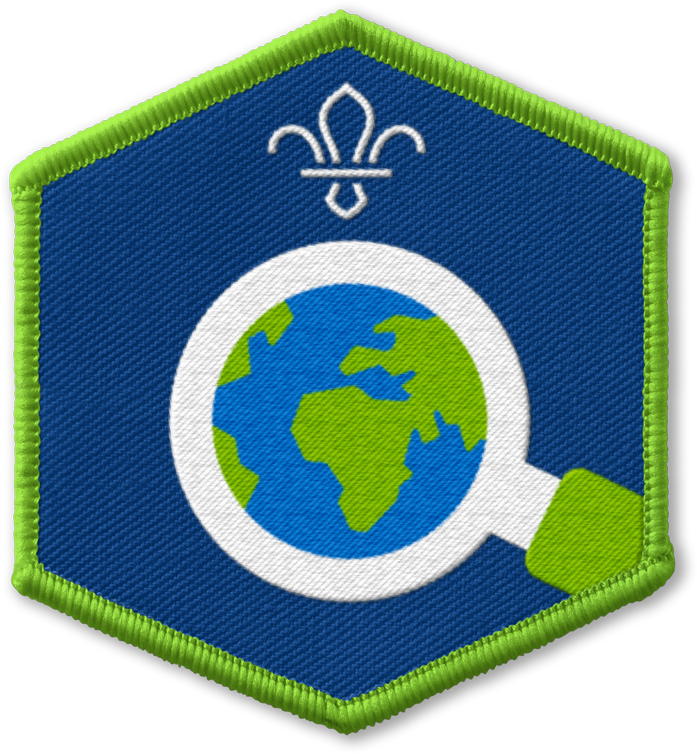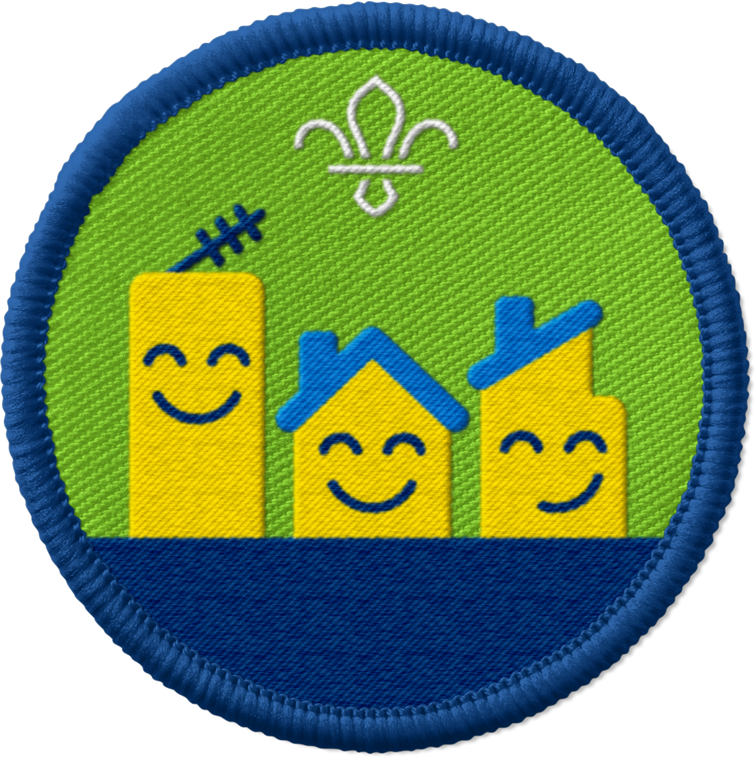
Behind the disguise
You’ll need
- A4 paper
- Pens or pencils
- Fancy dress items
Before you begin
- The person leading the activity should invite a person who lives and works in the local community to visit the group at a meeting. They’ll need to be prepared to answer ‘Yes or no’ questions about who they are and what they do, and be okay with wearing a cunning disguise! If the visitor’s a parent, carer or a teacher, the disguise may need to be even more cunning to fool the group.
- Check whether the visitor is still available in advance of the meeting and give them all the information they need to get to the meeting place on time. You should also check to see if they have any accessibility needs.
Run the activity
- Everyone should split into groups. The person leading the activity should give out the pens or pencils and paper to each group, and explain that they’ll be meeting a visitor who lives and works in the community. Tell them to find out who the visitor is by asking questions. Make clear that they may only ask ten questions per group, and that each question should have a ‘Yes or no’ answer (e.g. ‘Do you wear a uniform?’).
- The groups should take between five and ten minutes to sit together and come up with ten questions to ask. They should also come up with a team name.
- The person leading the activity should bring in the visitor, who should be wearing the fancy dress item as a disguise. Choose a group to ask questions first and move them to a quiet area so that they can’t be overheard. When they’ve asked their questions, each group should come to a decision together about who they think the visitor is and what they do.
- Each group should write down who they think the visitor is on a piece of paper without revealing this to any of the other groups. They should also write their team name. They should then hand the piece of paper to the person leading the activity.
- Everyone should come together and the visitor can remove their disguise and show their true identity. The group can ask the guest any other questions they may have for them about their job, if this isn’t a problem. They should also talk to the other groups and find out what they thought. The person leading the activity may reveal which groups got the correct answer.
Reflection
The group has met a mystery guest. How hard was it to work out who they were behind the disguise? Did it turn out to be someone you have seen in the community before? Was it frustrating to only be able to ask ten ‘Yes or no’ questions?
Each group had to come up with questions to ask the visitor to find out who they were. How hard was it to agree on ten questions as a team? Which questions helped the most to identify the visitor? What did you learn about the kind of role the visitor performs in the community?
Safety
All activities must be safely managed. You must complete a thorough risk assessment and take appropriate steps to reduce risk. Use the safety checklist to help you plan and risk assess your activity. Always get approval for the activity, and have suitable supervision and an InTouch process.
Crafty investigators may wish to try and guess the identity of the visitor with fewer questions. To help those who find the activity too hard, the visitor could bring some clues from their job with them to show, while those people are asking questions.
If anyone is uncomfortable asking questions, ask these members of the group to write down their questions for someone else to ask.
All Scout activities should be inclusive and accessible.
Everyone should write a story about a day in the life of the visitor, doing their job in the community. Instead of this, they could also make a chart or diagram to map out the day. Everyone should think about what they could do to help that person do their job.
Let young people come up with the questions to ask themselves. The only rule is that they have to be ‘Yes or no.’



